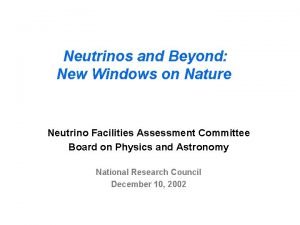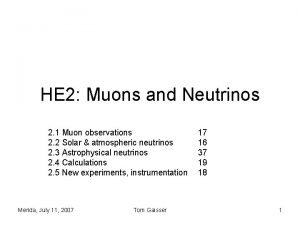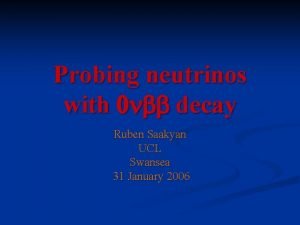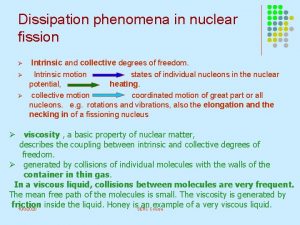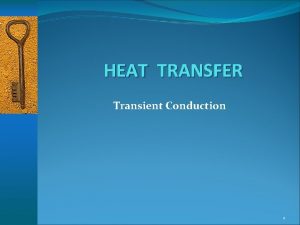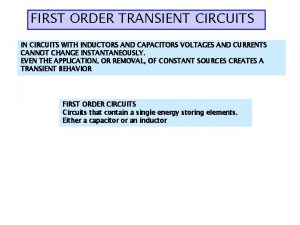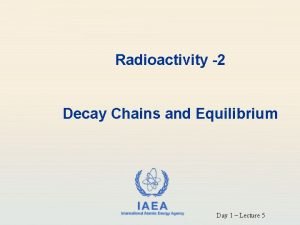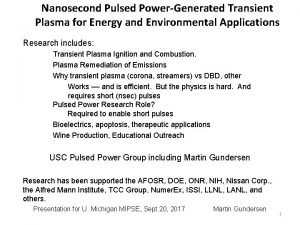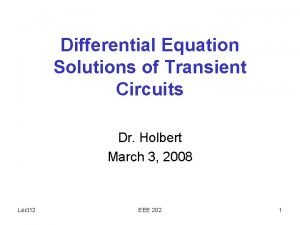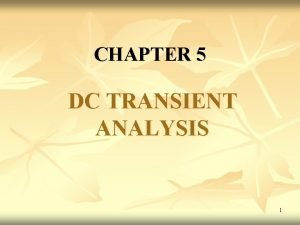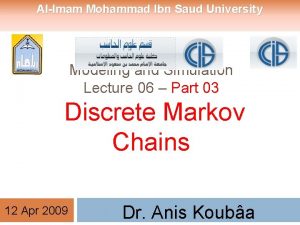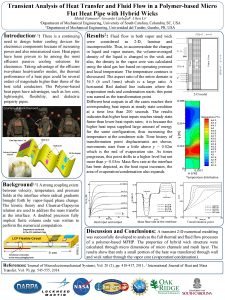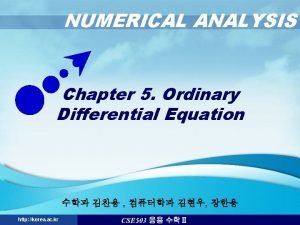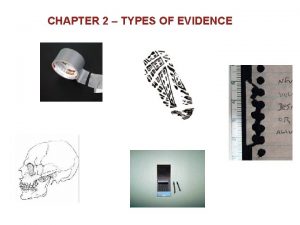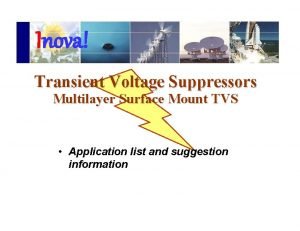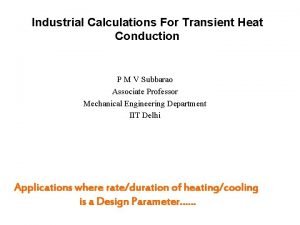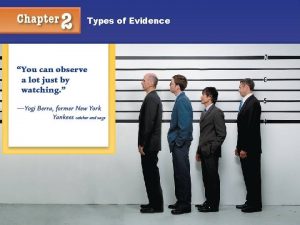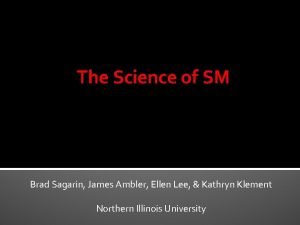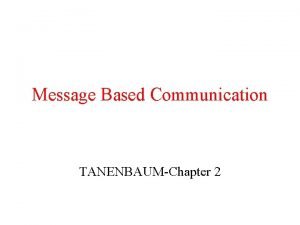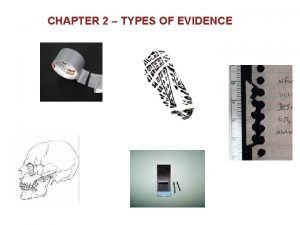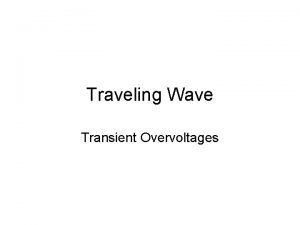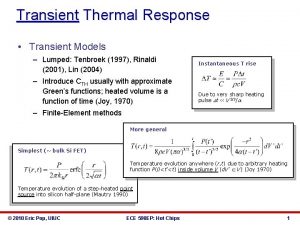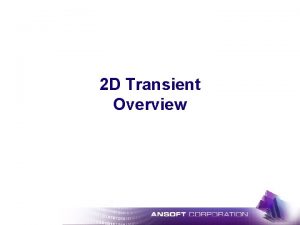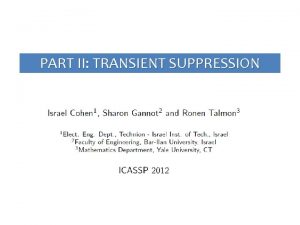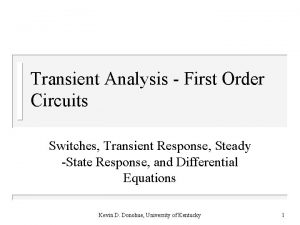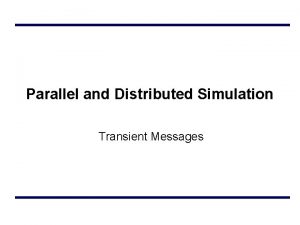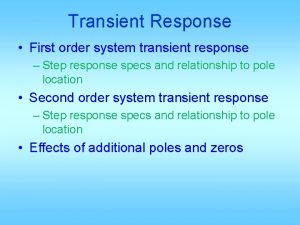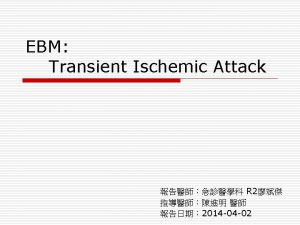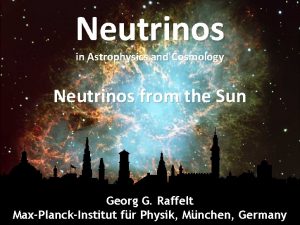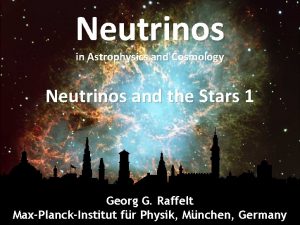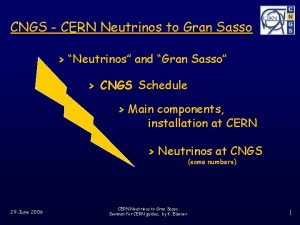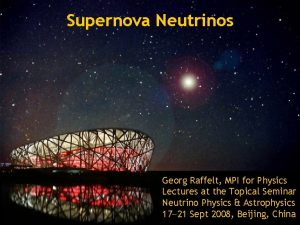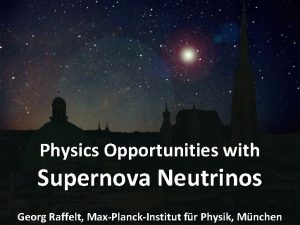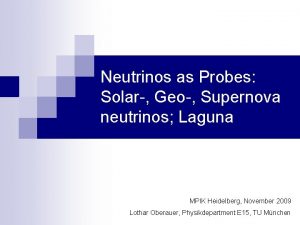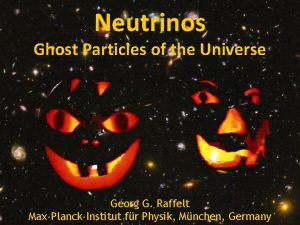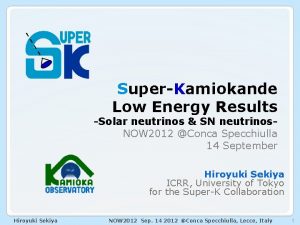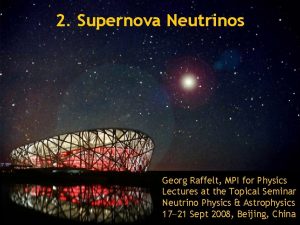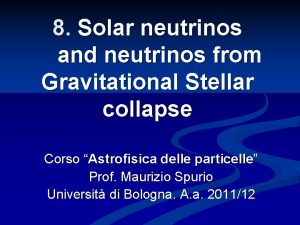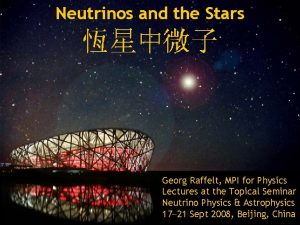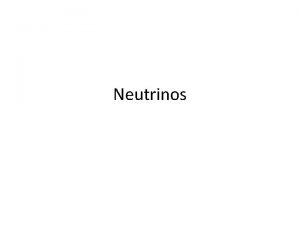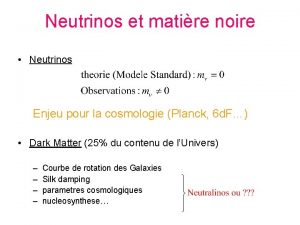Search for neutrinos from transient sources with the





























- Slides: 29

Search for neutrinos from transient sources with the ANTARES telescope and. Imen optical follow-up observations Al Samarai CPPM France Imen Al Samarai On behalf of ANTARES, TAROT and ROTSE Collaborations

Overview • • • Motivation ANTARES TATo. O (Telescope-Antares Target of Oppotunity) Optical Follow-up Optical analysis 2

Introduction Candidate transient sources AGN Flares, Micro-Quasars…. Long • Core collapse of supermassive stars (G ≈ 100) GRBs • Expected prompt emission of neutrinos • Prompt emission of gammas • Afterglows (X, V, Radio…) • Observed : 1 CCSN with HR jets /1000 Core collapse SNe • Core collapse of massive stars (G ≈ few) • Expected prompt neutrino emission (Te. V) • hidden in gamma • Afterglows (X, V, Radio…) Credits: Hongfeng Yu [Razzaque, Meszaros, Waxman (Mod. Phys. Lett. A 20, 1998)] Credits: CXC/M. Weiss 3

Introduction Candidate transient sources AGN Flares, Micro-Quasars…. Long • Core collapse of supermassive stars (G ≈ 100) GRBs • Expected prompt emission of neutrinos • Prompt emission of gammas • Afterglows (X, V, Radio…) • Observed : 1 CCSN with HR jets /1000 Core collapse SNe • Core collapse of massive stars (G ≈ few) • Expected prompt neutrino emission (Te. V) • hidden in gamma • Afterglows (X, V, Radio…) 4

ANTARES The neutrino detector lk a t ni ti H. e Se 2500 m an t s Co 12 lines 25 storeys/line 3 PMTs/storey 885 PMTs 14. 5 m 350 m 40 km to shore 100 m 70 m http: //antares. in 2 p 3. fr/ 5

Techniques for transient sources search in ANTARES Triggered search Neutrino Detection triggered by external detections (SWIFT, INTEGRAL, FERMI…) providing timing and position information Rolling Search for HE neutrino events or multiplets (n>=2) within the same direction and temporal window. 6

Techniques for transient sources search in ANTARES Triggered search Neutrino Detection triggered by external detections (SWIFT, INTEGRAL, FERMI…) providing timing and position information Advantages: Nature and location of the sources are known Very low background Disadvantages: Dependence on external detections SWIFT (1. 4 sr fov) → Only ~1 / 9 GRB is detected (no external trigger for choked GRBs) Look for neutrinos in d. T and (Ra, Dec) (Offline analysis) Gamma signal alert Time + Position SWIFT 7

Techniques for transient sources search in ANTARES Rolling Search observation Search for HE neutrino events or multiplets (n>=2) within the same direction and temporal window. Neutrino signal alert Avantages: • Covers full hemisphere • No external triggers • No hypothesis on the nature of the source Disadvantages: The nature of the source is unknown → Need follow up to confirm detection (nature, redshift…) → need fast analysis and good angular resolution 8

TATo. O (Telescopes ANTARES Target of opportunity) 9

TATo. O Triggers Multiplets A burst of 2 n or more detected in • Time window : 15 mn • Direction window : 3° HE neutrino events • Up-going only + Best reconstructed • Cuts on simple energy estimators number of touched floors and hits amplitude (pe) Tuned to trigger 1 to 2 false alerts /month mean energy : ~5 Te. V • Expected Doublet alert rate ~ 7. 10 -3/yr • Data : No doublet detection in 3 years • Expected significance ; N = 2 ~ 3 s (N = 3 ~ 5 s) Neutrino effective area 10

TATo. O Expected performance on angular resolution Expected off-line performances 1. 86° 1 st loop : On-line ~80% of the HE reconstructed events are in the telescopes field -of-view The ANTARES Telescope Neutrino Alert System Ageron et al. Submitted to Astroparticle Physics ar. Xiv: 1103. 4477 11

Follow up strategy Follow-up observations (T+45 days) TAROT only Prompt (T+28 days) ROTSE only T+27 days (T+16 days) ROTSE only T+15 days T+9 days T+7 days. . T 0 (30 images) [ 1 mn, 1 day [ NEUTRINO ALERT ! 12

Optical data Oct 2009 to May 2011 37 neutrino alerts 10 Telescope maintenance Too close to the sun … - Fits images - 2048 x 2048 pix - 1 pix ~ 3 arcsec 27 with optical data 5 with only one night data 22 with exploitable data ROTSE and/or SNLS software transient source search pipeline 13

Analysis strategy Image subtraction Looking for varying signals! Image From TATo. O follow-up Reference image ~ months later (No signal) PSF matched Residual image Cuts on : SNR Flux variation FWHM … ! s e y n dat a M ndi ca 14

Analysis strategy Image subtraction Suc c sub essful trac tion Fai sub led tra cti o ns • Bad image / reference • deblending problems … 15

Analysis strategy Background rejection (1) CUT to see the candidate flux evolution The candidate must be detected at least 2 nights/ 2 observations Fainter - bad pixels - interference patterns -… Too faint residuals Unlikely to be detected twice ~ 80% of the faint residuals (17 -18 mag) are rejected 16

Analysis strategy Background rejection (2) Additionnal cut The light curve must be rising Fast light curve building implemented s d e l mp roun a Ex ckg Ba a of te at pla mpl b/ I N c S es temgent t e Nu 3. ag m 5 17

Analysis strategy Background rejection (2) Additionnal cut The light curve must be rising Fast light curve building implemented s d e l mp roun a Ex ckg Ba Failed subtraction a of te at pla mpl b/ I N c S es temgent t e Nu Variable star? 3. ag m 5 18

Analysis strategy Background rejection (3) Comparison with catalogs Within 0. 2 arcminute Stars/Galaxies SDSS 2 MASS Background rejection Within 5. 0 arcminute Suc c sub essfu trac l tion Asteroids Minor planets MPChecker 19

Overall efficiency «fake» supernovae In a typical ROTSE alert (Limiting mag ~ 17) : Nugent templates 100 SNe type Ib/c injected in the images (R-band) Random Peak magnitude [12, 18] tec de of a ple m a x E rve u c t ligh SN e k a ted f ry ina ! lim e r P Efficiency = SNe detected/ SNe injected ~ 50% 20

Data analysis GRB - Analysis of 5 prompt observations of 30 images GRB optical analysis is now finished ! No GRB candidate brighter than ~15 mag was found within 75 s from the n trigger ry! a in Constraints on : m i l Pre • jet parameters • neutrino-afterglow time delay • Luminosity are being derived Paper in preparation… 21

Conclusion • TATo. O is an optical follow-up program running efficiently since Feb. 2009 • Refined positions (Dθ 0. 3°) are successfully sent to the telescopes (still needs to be automatized) • SN optical analysis is in progress • First results on optical analysis are being derived for GRBs • A new low energy alert trigger compatible with a particular direction (local matter. . ) is being studied to increase sensitivity to cc-SNe • Extension to bigger telescopes (Zadko) for deeper observations is being implemented 22

backup 23

GRB analysis 5 alerts with prompt observations analysis of the 1 st night data (30 images) 15 pairs Im 1 Im 2 Im 3 REF Im 4 REF Analysis finished ! No GRB candidate GOOD! sub 1 sub 2 NOT GOOD sub 2 sub 1 24

Analysis strategy (SN example) Night 1 Night 2 Coadd 2 (4 images) Coadd 1 (4 image) REF Coadd 4 (4 images) The reference must be deeper than the images to analyse REF GOOD! sub 1 Coadd 3 (4 images) sub 2 NOT sub 1 GOOD sub 2 List of the subtraction residuals for each night 25

TATo. O Efficiency Time delay Duty cycle 26

Optical follow up efficiency • ROTSE strategy : 13 observations • TAROT strategy : 12 observations More than 70% efficiency for most of the observations with ROTSE 27

Data correction and reduction On-line - Correction from fringe - Dark subtraction - Flat-fielding Copy all telescope contributions on TATo. O machine Off-line - Source extraction using SExtractor - Source calibration using USNO A 2. 0 to get astrometric and approximate photometric solutions 28

Data correction and reduction On-line - Correction from fringe - Dark subtraction - Flat-fielding Copy all telescope contributions on TATo. O machine Off-line - Source extraction using SExtractor - Source calibration using USNO A 2. 0 to get astrometric and approximate photometric solutions Bad weather or strong winds alterate the data quality by : - reducing the visibility depth (limiting magnitude) - spreading the stellar FWHM (seeing) Calibration may fail (typically 1 -2 images/alert) Example : Influence of the wind speed on the mean seeing of the images 29
 Windows on nature
Windows on nature Neutrinos
Neutrinos Neutrinos
Neutrinos Sources of water sources of water
Sources of water sources of water Print and web sources
Print and web sources Who
Who Example of conditional evidence
Example of conditional evidence Transient time
Transient time Transient conduction heat transfer
Transient conduction heat transfer First order transient circuit
First order transient circuit Transient equilibrium equation
Transient equilibrium equation Transient plasma
Transient plasma Transient solution differential equations
Transient solution differential equations Rw + vo c inverter transient response vod inverte...
Rw + vo c inverter transient response vod inverte... Dc transient analysis
Dc transient analysis Transient response in vlsi
Transient response in vlsi Transient markov chain
Transient markov chain Transient analysis thermodynamics
Transient analysis thermodynamics Euler midpoint method
Euler midpoint method Whats testimonial evidence
Whats testimonial evidence Wound care study days
Wound care study days Surface mount transient voltage suppressor
Surface mount transient voltage suppressor Transient synchronous communication
Transient synchronous communication Transient heat transfer in industry
Transient heat transfer in industry Transient evidence examples
Transient evidence examples Transient tic disorder
Transient tic disorder Transient hypofrontality
Transient hypofrontality Transient exuberance definition
Transient exuberance definition Transient vs persistent communication
Transient vs persistent communication Examples of conditional evidence
Examples of conditional evidence
